
Zhejiang University
About Us
Zhejiang University (ZJU) is a national university in China, which grew out of “Qiushi Academy” founded in 1897. The university campus is located in the city of Hangzhou, Zhejiang province. With seven campuses, Zhejiang University encompasses an area of 4.26 square kilometers with school buildings covering 2.57 million square meters of floor space. As a comprehensive research university with national and international impact, Zhejiang University is the key university listed in the “211” project, “985” project. It is one of China’s oldest, most selective and most prestigious institutions of higher education and is consistently ranked among China’s top universities. It is a member of the C9 League, the Yangtze Delta Universities Alliance, the Association of Pacific Rim Universities, Worldwide Universities Network et al. It is on the top university with most comprehensive disciplines and the highest rate of students’ entrepreneurship. In the Essential Science Indicator (ESI) rankings of 22 disciplines, Zhejiang University ranks among the top 1% in 15 disciplines, and is listed in the top 100 of the world’s academic institutions in 4 disciplines. Zhejiang University Library’s collection contains about 7 million volumes, making it one of China’s largest academic libraries. In addition, Zhejiang University has 7 high-level affiliated hospitals.
More information about Zhejiang University available at: http://www.zju.edu.cn/
Role in CHEERS
WP 3 – Oxygen carriers and characterisation of fuel conversion phenomena
As we know, CO2 is the primary greenhouse gas causing global warming which has aroused increasing attention all over the world. Fossil fuels used for power generation account for a large amount of CO2 emission. It is a great challenge to separate, capture and store CO2 from power generation. Chemical looping combustion is a new and novel technology with characteristic of inherent separation of CO2 without energy penalty. The use of coal in CLC is very attractive in future with restriction in CO2 emissions, since coal will keep on being a main energy source in the medium term. Better understanding of the characteristic of chemical looping combustion system, especially for micro scale, is the basement of industrial application. The computational fluid dynamics method has become a well-developed academic discipline and an effective instrument for engineering problems, which will play a significant role in the CHEERS project.
Zhejiang University will carry out the numerical study on the characteristic of chemical looping combustion system in CHEERS project. Fully-resolved simulation of char particle conversion will be considered and execute firstly. A ghost-cell immersed boundary method will be developed and implemented to investigate the heat and mass transfer during combustion. Also, the Eulerian-Eulerian/Eulerian- Lagrangian method will be used to research behavior of the reactor.
Objectives:
- To provide detail information of fuel particles combustion in micro scale by fully-
resolved simulation - To promote the accuracy of model used for chemical looping combustion
- To investigate the flow behavior, heat and mass transfer, and reaction characteristics
of the system
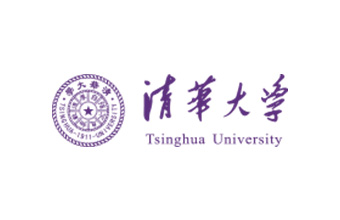
Tsinghua University
About Us
Tsinghua University is developing at a breathtaking pace into a comprehensive research university. At present, the university has 14 schools and 56 departments with faculties in science, engineering, humanities, law, medicine, history, philosophy, economics, management, education and art. The University has now over 25,900 students, including 13,100 undergraduates and 12,800 graduate students. As one of China’s most renowned universities, Tsinghua has become an important institution for fostering talent and scientific research.
More information about Tsinghua University available at:
http://www.tsinghua.edu.cn/publish/newthuen/newthuen_cnt/about-th/about- 1.html
Role in CHEERS
WP 6: Demonstration in operational environment and recommendations at TRL7
The prototype testing will be organised, prepared, carried out and duly reported. Basis will be a 3MWth CLC reactor system that will be partially integrated (compliant to TRL5 and TRL6) and fully integrated into a system prototype (compliant to TRL7) This work package organises the construction work at the test site including the 3MWth CLC-CCS system prototype demonstrator designed in work package 4, carries out the auto-thermal operations and test campaigns of the CLC-CCS system, and obtains critical technologies of CLC including fuel reactor, carbon stripper, solid feed system, oxygen polishing unit, etc. The following steps apply:
- Interface definition and specificities at test site; this will be clarified prior to project start-
up, and will be discussed among all CHEERS partners to be finally decided at Launch
event (cf. WP1, D1.1). - Organise the construction design and equipment manufacturing and purchase of 3MWth
CLC-CCS system prototype. - Build and operate the 3MWth CLC-CCS system prototype, for different purposes of test
campaigns. - Demonstrate and gain knowledge by detailed analysis of the test data from the 3MWth
CLC-CCS system prototype to identify critical parts of the technology. - Gain experience for future scale-up of the CLC technology to commercial size.
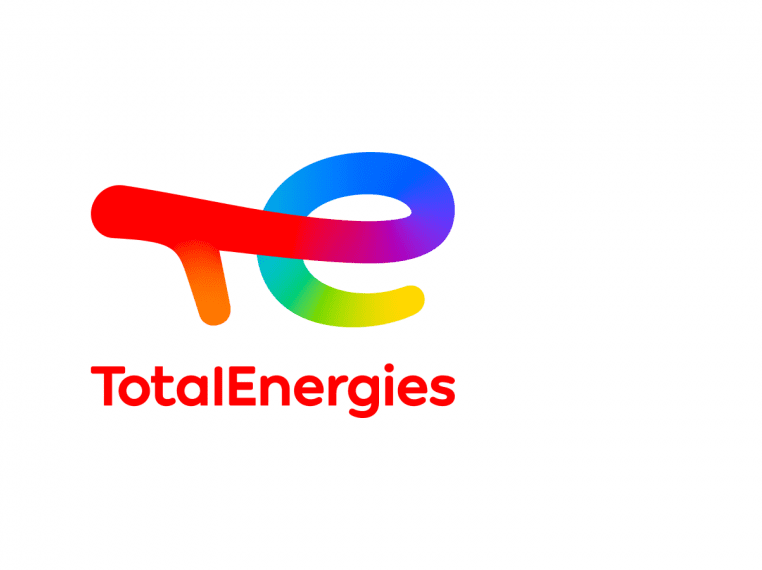
TotalEnergies
About Us
TotalEnergies is a major energy player committed to supplying affordable energy to a growing population, addressing climate change and meeting new customer expectations.
Those commitments guide what we do. With operations in more than 130 countries, we are a global integrated energy producer and provider, a leading international oil and gas company, and a major player in low-carbon energies. We explore for, produce, transform, market and distribute energy in a variety of forms, to serve the end customer.
Our 98,000 employees are committed to better energy that is safer, cleaner, more efficient, more innovative and accessible to as many people as possible. As a responsible corporate citizen, we focus on ensuring that our operations worldwide consistently deliver economic, social and environmental benefits.
Our ambition is to become the responsible energy major.
To combat climate change without curbing economic and social development, the carbon intensity of the fossil fuel mix must be reduced. At TotalEnergies, this is one of the three key focuses of our climate strategy. As an energy source that is more cost-effective and above all produces less carbon emissions than other fossil fuels, natural gas is one of the keys to the energy transition.
A way to limit CO2 emissions in the atmosphere involves capturing the CO2 at the source and storing it underground or reusing it. This technology is called carbon capture, utilization and storage (CCUS). TotalEnergies play an active role in developing this technology both independently and through partnerships, with the aim of evaluating its real potential in the fight against climate change and making it effective, safe and feasible on a large scale. A pioneer in this area, TotalEnergies invested heavily in the Lacq Pilot Project and contribute to other initiatives elsewhere in the world, in particular in Norway. TotalEnergies has been working on the development of Chemical Looping Combustion (CLC) since 2006 namely in collaboration with IFPEN. Various process and material aspects of CLC have been studied in this project including use of natural gas,coal, and petcoke as feed and various natural and synthetic oxygen carriers.
More information about TotalEnergies available at : https://www.total.com/en
To discover more on CCUS @TotalEnergies:
- Can R&D solve the daunting challenges of taking carbon out of the equation? – click here
- Focus on CCS Northern Lights project – click here
Role in Cheers
TotalEnergies is involved in different work packages and tasks of CHEERS project, either as the leader or support group. TotalEnergies’ main involvements can be briefly listed as:
WP 2 : Development and Design Studies
TotalEnergies is involved in this work package as the support for different development tasks of design, modeling, process simulation. In addition, industrial know-how of the group will be used for the tasks related to pre-FEED design such as HSE risk evaluation and mitigations, preparation of basis of design, process design package, etc.
WP4: Process integration and system prototype design
TotalEnergies is the leader of this work package whose main objective is FEED, detailed engineering and procurement of different CLC pilot plant. TotalEnergies and DBC are responsible of different engineering tasks defined in this WP based on the results from WP2 with support from IFPEN and TU.
A dedicated task is foreseen in the Work Package 4 to evaluate and to validate flue gas treatment technologies required for CLC with CO2-EOR (Enhanced Oil Recovery) application. This is a critical section of this work package and CLC industrialization particularly for combustion of petcoke which contains considerable sulfur, nitrogen, and heavy metal contents.
WP5: Integrated assessment for industrial scale-up
Work Package 5 consists in techno-economical evaluation of CLC- CCS plant in different real industrial scale conditions based on both EU and China environments. TotalEnergies will be involved in different tasks of this work package such as the definition of the industrial scale basis of design, development of industrial CLC plant design including reactor system, downstream flue gas treatment systems, upstream feed and carrier preparation sections, and related process simulations. In addition, TotalEnergies will lead a Life Cycle Assessment (LCA) to evaluate the overall impact of CLC unit with EOR application.
WP 6: Demonstration in operational environment and recommendations at TRL7
TotalEnergies participates as a support in the Work Package 6 which consists in different critical tasks of construction, commissioning, start-up and operation of the CLC pilot plant in DBC site. Special attention will be given to HSE considerations together with the industrial technical and operational skills to ensure a safe and successful operation of the pilot plant.
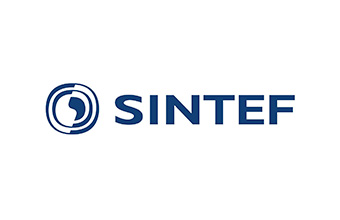
SINTEF Industry
About Us
The research institutes SINTEF Materials and Chemistry (SINTEF MK) and SINTEF Petroleum Research have merged from 1 January 2018. The new institute is called SINTEF Industry, the biggest research institute within SINTEF AS, a non-profit research foundation and Scandinavia’s largest independent research organization with more than 2100 employees with headquarter in Trondheim. SINTEF Industry has built extended competences and know-how in experimentation and mathematical modelling within the fields of processes utilizing catalyst and sorbent materials, chemical looping technologies.
This is highlighted by SINTEF Industry’s participation in several national and international projects, acting either as coordinator or partner. Of strong relevance for the present proposal is theircompetence of oxygen sorbent and catalyst materials, process development (i.e. fluidised, fixed and rotating beds) and modelling activities for chemical looping (reforming, combustion) and natural gas conversion processes (partial oxidation, oxidative dehydrogenation, reforming, etc).
Role in CHEERS
WP 3 – Oxygen carrier development and production
SINTEF Industry (formerly SINTEF MK) contributes expertise on oxygen carriers. It has a sizeable group of researchers dedicated to materials science and related processes, and excels in developing materials with specific oxygen stoichiometry. SINTEF Industry is highly regarded when it comes to emerging and improved oxygen-carrier materials and their usage. In this endeavour, it has a large range of equipment, including a semi-industrial spray granulator, a spray drier, and a fully automated cyclic gas testing system used with a thermogravimetric measurement system for screening material properties (i.e. capacities, kinetics, enthalpy, mapping of effects related to partial pressure of oxygen etc.). It also has at its disposal other automated test units for specific testing of material in fixed and fluidised bed, and for studying gas conversion and material behaviour. In the latter unit, CLC material tests are carried out in a 3kW attrition test rig. For the characterisation of materials, instruments are at hand for in-situ x-ray diffraction of materials in a controlled atmosphere and temperature, and for cold attrition testing. The equipment also includes reactors for reactivity tests. Pre- and post- characterisation tools of surfaces/micro-structure by Scanning Electron Microscopy (SEM) are also at hand.

SINTEF Energy Research
About Us
SINTEF Energy Research is an independent Norwegian research institute affiliated under the SINTEF Foundation, which is the largest independent research organisation in Scandinavia with more than 2000 employees. Its main office and main activities are located in Trondheim, Norway, sharing facilities with the Norwegian University of Science and Technology (NTNU). SINTEF Energy Research has a staff of 240 persons, and had in 2016 an annual turnover of NOK 439 million. SINTEF Energy Research is focusing on electrical and thermal energy throughout the whole chain from sources via transport, power generation, transmission, conversion techniques, distribution and end-use. During the last twenty years SINTEF Energy Research has built up a large competence and experience and project basis within CO2 capture and transport, and has been the coordinator of several large integrated projects in the field of CCS under the European Framework Programmes.
Role in CHEERS
The main roles of SINTEF Energy Research will be to act as coordinator of the project, and as work package leader of WP1 “Coordination and project management” and WP3 “Oxygen carriers and characterisation of fuel conversion phenomena”. In addition, SINTEF Energy Research has a major role in WP5 “Integrated assessment for industrial scale-up” and will support Bellona within WP7 “Knowledge-sharing, communication and dissemination”.
WP1 – Coordination and project management
Proper execution of the project will be accomplished through the monitoring of the work progress, and (if required) via decisions on changes relating to the scope of work, deliverables, budget allocations, strategic assessments and emerging opportunities. Public relations and specific dissemination actions are also seen as managerial actions, beyond the scope of the dedicated Work Package 7 (Knowledge-sharing, communication and dissemination). The current Work Package will produce two deliverables (D1.2 to be updated twice), and no publication is planned for.
Objectives of WP1:
- To secure compliance and fulfilment of the Grant Agreement with the European Commission
- To conduct the project in accordance with the Consortium Agreement (Section 3.2,
Consortium Agreement) - To ensure adequate execution of the overall project, including progress management and
reporting
WP 3 – Oxygen carriers and characterisation of fuel conversion phenomena
SINTEF Energy Research is the leader of WP3 and shall ensure that the work package follows the plan and will be able to meet its main objective, which is to ensure proper oxygen carriers for petcoke conversion by CLC technology. The work package involves contributions from several partners and will involve selection of candidate materials, materials production, testing and validation at both laboratory and pilot scale, and detailed studies of petcoke conversion phenomena in CLC. The research activity of SINTEF Energy Research in WP3 will be on the pilot testing of oxygen carrier materials in a 150kWth CLC unit (see picture) and on detailed numerical studies of petcoke conversion.
WP5 – Integrated assessment for industrial scale-up
In WP5 SINTEF Energy Research will lead the task on the economic evaluation of the CLC-CCS deployment and infrastructure development based on business model from industrial partners for a CCS chain from refinery and industries. Additionally, SINTEF Energy Research will support IFPEN in the modelling of the CLC reactor unit with a focus on performance modelling of oxygen carriers and intends to predict the performances of a CLC unit at industrial scale. This CLC reactor model will be integrated in a process simulation model for the application of CLC in a refinery, including CO2 processing unit, and SINTEF Energy Research will be responsible for benchmarking the CLC-CCS against a reference solvent based CO2 capture plant using generic MEA.
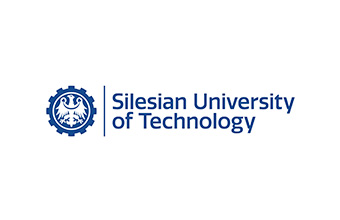
SILESIAN
About Us
The Silesian University of Technology (SUT) in Gliwice is one of the largest universities in Poland and it is divided into 13 Faculties comprising 48 engineering disciplines. The unit directly involved in CHEERS would be The Institute of Thermal Technology (ITT, website: http://www.itc.polsl.pl) which is a part of the Faculty of Power and Environmental Engineering. The main achievements of ITT are associated with its pioneering role in several research fields: combustion in highly preheated air, oxy-combustion, mathematical modeling using the Boundary Element Method, exergy analysis, ecological costs, inverse analysis and others. In the last 10 years the ITT staff (currently 33 staff members and 22 PhD students) has published more than 600 journal papers, 13 books and more than 800 conference publications at international reviewed conferences.
ITT’s experimental work is performed in seven laboratories dedicated to different subjects, one of them being the Combustion Technology Laboratory. It is equipped with standard analytical instruments as well as some unique, custom-made test stands. Among analytical instruments in- use are Agilent 6890N GC with TCD and FID detectors, as well as Netzsch STA 409 LUXX TGA coupled with Perkin Elmer Spectrum 100 FTIR which allows analysis of thermochemical conversion of carbonaceous samples with simultaneous monitoring of gaseous products composition. Moreover, FTIR is equipped with an ATR accessory which enables characterisation of a particle surface. Custom-made set of laboratory apparatus comprise of number of reactors, such as tube reactor that allows study of heterogeneous catalysis of the decomposition of vapour organic compounds on a fixed bed of carbonaceous materials or a horizontal laminar flow drop furnace for investigation of particle thermochemical conversion kinetics.
Role in CHEERS
WP 3 – Oxygen carriers and characterisation of fuel conversion phenomena
ITT will play an experimental role in which the focus will be to characterize petcoke gasification with H22O and CO2, in addition to oxidation with O2 and development of global kinetic of heterogeneous reactions. In addition, it will be the development of single particle thermal conversion models.
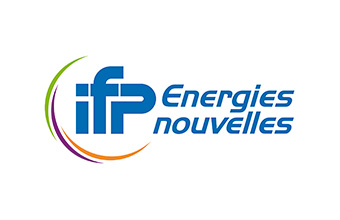
IFPEN
About Us
IFP Energies nouvelles (IFPEN) is a major research and training player in the fields of energy, transport and the environment. From research to industry, technological innovation is central to all its activities.
As part of the public-interest mission with which it has been tasked by the public authorities, IFPEN focuses on:
- providing solutions to take up the challenges facing society in terms of energy and the climate, promoting the transition towards sustainable mobility and the emergence of a more diversified energy mix;
- creating wealth and jobs by supporting French and European economic activity, and the competitiveness of related industrial sectors.
Its programs are structured around 3 strategic priorities:
- Sustainable mobility: developing effective, environmentally-friendly solutions for the transport sector;
- New energies: producing fuels, chemical intermediates and energy from renewable sources;
- Responsible oil and gas: proposing technologies that meet the demand for energy and chemical products while improving energy efficiency and reducing the environmental impact.
- An integral part of IFPEN, its graduate engineering school – IFP School – prepares future generations to take up these challenges.
More information about IFPEN available at: http://www.ifpenergiesnouvelles.com/
Role in CHEERS
IFPEN is involved in all technical work packages of the project and is responsible for several
deliverables.
WP 2 – Development and design studies
The purpose of the WP 2 is to provide the conceptual design of the system prototype including all information required for the engineering studies in WP4. IFPEN is leader of this WP and assumes responsibility for all deliverables. The following steps are required:
- To establish the basis of design for the study including all information about the existing test facility at DBC and specifications required for the design
- To characterize the kinetic of the reaction based on experimental results
- To develop models for the mechanical design and the process design of the chemical lopping section including the air reactor, the fuel reactor, the carbon stripper and specific devices for solid circulation and separation as L-valves, loop seals and cyclones.
The main deliverable of this WP is the pre-FEED study for the demonstrator.
WP 3 – Oxygen carriers and characterization of fuel conversion phenomena
IFPEN is involved in this WP as the main partner of SINTEF Industry for the development and the validation of oxygen carriers for petcoke combustion. IFPEN participates in the selection of primary candidates based on its previous experience in oxygen carriers development for more than 10 years, and evaluates the selected materials mainly in terms of reactivity and lifetime through experimental studies, notably by using a 10 kWth CLC pilot unit (see picture).
WP 4 – Process integration and system prototype design
IFPEN is active in this WP by providing R&D support to the engineering study, in particular for the Front End Engineering Design (FEED) study based on the conceptual design performed in WP2. IFPEN also assists TOTAL in the procurement of the fuel reactor and participates in the study dedicated to the selection of the most appropriate technologies for the flue gas treatment.
WP 5 – Integrated assessment for industrial scale-up
The main goal of this WP is to provide a techno-economic study of an industrial CLC-CCS unit, including integration with CO2 transport systems. The following tasks are scheduled to achieve this objective:
- The modelling of the CLC reactor unit. Initially developed for the design of the demonstrator in WP2, this model includes performance modelling of oxygen carriers and intends to predict the performances of a CLC unit at industrial scale.
- The process simulation of the overall CLC-CCS plant including boiler system for heat recovery and CO2 purification steps to achieve transports specifications. For benchmarking purposes, a reference solvent-based CO2 capture plant is also modeled and a cost estimate is provided for both cases.
- The economic evaluation of the CLC-CCS deployment and infrastructure development based on business model from industrial partners for a CCS chain from refinery and industries.
IFPEN has the lead for this WP and is responsible for the deliverables of the first two tasks. Its main input is the simulation of the CLC-CCS plant and its cost estimate.
WP6 – Demonstration in operational environment and recommendations at TRL7
IFPEN participates into this WP by providing the demonstrator specifications for the test site definition. In the latter stages of the project, IFPEN also assists the start-up and operations of the demonstrator with staff present on-site.

DONGFANG Boiler Group
About Us
Dongfang Boiler Group Co., Ltd. (DBC) is the first-class and the largest suppliers of thermal power equipment, nuclear power equipment, power plant auxiliaries, chemical vessels, environmental protection equipment and coal gasification equipment in China. It is also a first- class service provider of power plant and general contractor of environmental protection equipment in China. Our products, such as 300MW~1000MW class supercritical and ultra supercritical once-through boilers, subcritical natural circulation boilers of 600MW class and below, 250MW~600MW class subcritical and supercritical CFB boilers and 300MW~600MW class subcritical and supercritical double arch furnace boilers, equipment for 1000MW class nuclear power plant, petrochemical vessels as well as HP heaters, LP heaters, deaerators and De-SOx and De-NOx equipment for power plant, have reached the world’s advanced level.
DBC has a lot of experience on Circulating Fluidized Bed combustion and is standing in the front of CFB boiler technology. “600MW supercritical circulating fluidized bed boiler technology development and engineering demonstration” project won the first prize for China national scientific and technological progress in Jan. 2018. These experience in CFB combustion will serve the CHEERS project.
Role in CHEERS
WP 4 – Process integration and system prototype design
Design Integration and Front End Engineering Design (FEED) for the CLC plant, excluding the fuel reactor
In CHEERS project, Dongfang Boiler will provide the demonstration site as well as the utility facilities in the test center of the Key Laboratory for Clean Combustion and Flue Gas Purification of Sichuan Province, located in Deyang City. An existing 3MWth CFB combustion test facility of Dongfang Boiler will be modified to demonstrate Chemical Looping Combustion of petcoke and coal. Dongfang Boiler is responsible for the engineering of this pilot facility except the fuel reactor, as well as the construction, start-up, and commissioning.

BELLONA
About Us
The Bellona Foundation is an independent non-profit organization that aims to meet and fight the climate challenges, through identifying and implementing sustainable environmental solutions. We work towards reaching a greater ecological understanding, protection of nature, the environment and health. Bellona is engaged in a broad specter of current national and international environmental questions and issues around the world.
As one of the world`s biggest political and economic powers, the EU is an important arena to create a better world for our descendants. The EU`s environmental legislation and directives are highly relevant also for Norway, through the EEC. Bellona has been established with an office in Brussels since 1994, the same year Norway voted no in the referendum on EU membership. Bellona Europa here seeks to influence the processes in the EU so that the outcome is beneficial both for people and the environment.
More information about Bellona available at: http://bellona.org/about-bellona
Role in CHEERS
WP 7 – Knowledge-sharing, communication and dissemination
The necessary flow of information across Work Packages (WP’s) and the embedded tasks must be based on trust and good governance. In this context, knowledge-sharing generally implies internal exchange of relevant topical information. While Bellona will work on timely and consistent internal communication throughout the duration of the project, two major workshops will also be held, one mid- to end-term workshop and one final workshop, both expected to be held at the project location in China. Communication activities will be centered around providing the public with a view of publicly-available project information, as well as support awareness- building and understanding of the technology’s relevance through developing this website and providing timely updates. In this respect, Bellona will also ensure that all publications are appropriately tracked and, to the extent allowed, disseminated on the project’s website.
The purpose of this WP is to provide a virtual service centre for the project to ensure efficient and proper knowledge-sharing and handling of communication and dissemination activities. Public relations and specific dissemination activities will be planned and aligned with the Coordinator (SINTEF) who is leading the WP1. In addition, specific events will be held throughout the duration of the project in order to bring experts together, including internal workshops and/or seminars.
Objectives:
- To share relevant knowledge regarding experience and policy issues among the partners
- To promote results to be duplicated in other industries and countries, and communicate why such duplication makes the project relevant for decarbonisation and creating/retaining employment across the economy, i.e. far beyond the project scope
- To facilitate communication within the consortium and with other relevant EU and
Chinese networks
